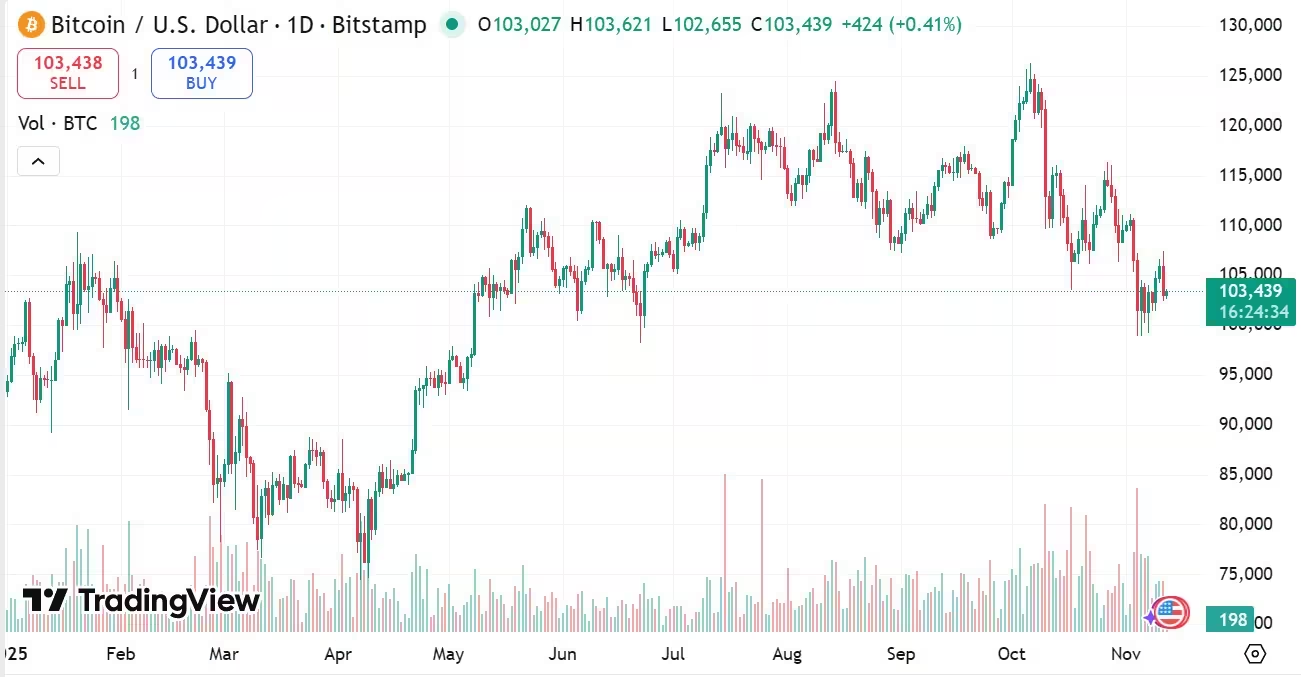4 Minutes
Morgan Stanley: Bitcoin’s Cycle Moves Into 'Fall'
Morgan Stanley strategists are framing Bitcoin’s recent price action as part of a seasonal, four-year cycle — and they say the market has now entered a 'fall' phase. In a recent episode of the podcast Crypto Goes Mainstream, Denny Galindo, an investment strategist at Morgan Stanley Wealth Management, argued that historical Bitcoin cycles tend to follow a three-up, one-down rhythm. Galindo advised investors to harvest gains during this stage to prepare for a possible downturn or 'crypto winter'.
Why 'fall' matters for crypto investors
Galindo’s harvest analogy signals that major Wall Street firms are applying cyclical investment frameworks to Bitcoin similarly to commodities or liquidity-driven macro assets. 'We are in the fall season right now,' he said. 'Fall is the time for harvest. So, it’s the time you want to take your gains. But the debate is how long this fall will last and when the next winter will start.' For traders and long-term holders, this means reviewing risk allocations, considering profit-taking strategies, and tightening exposure as macro risks rise.
Technical indicators show growing downside risk
On Nov. 5, Bitcoin fell below $99,000 and slipped under a key technical threshold: the 365-day moving average. CryptoQuant head of research Julio Moreno noted that the breach of the 365-day MA is a widely watched signal that often reflects weakening sentiment. Bitrue research analyst Andri Fauzan Adziima described the recent move as officially marking a 'technical bear market'.

Bitcoin price action in 2025
What the 365-day moving average means
The 365-day moving average is a long-term trend indicator that smooths daily volatility and helps signal the general market direction. When price falls below this average, many analysts interpret it as a shift from bullish to cautious positioning, which can trigger further selling or reduced risk-taking by institutional investors and funds.
Liquidity dynamics and market drivers
Beyond price signals, liquidity trends are also a concern. Market-maker Wintermute observed that key liquidity drivers — stablecoins, spot ETFs, and corporate digital asset treasuries (DATs) — have plateaued. According to Wintermute, inflows from these three pillars that had supported recent rallies are no longer accelerating, which could translate into thinner markets and larger price swings during corrections.
ETF inflows and institutional demand
Despite the recent dip, institutional adoption continues. Michael Cyprys, head of US brokers, asset managers and exchanges at Morgan Stanley Research, told the podcast that many institutional investors now view Bitcoin as a potential macro hedge — a form of 'digital gold' against inflation or monetary debasement. Cyprys noted that spot Bitcoin and Ether ETFs have significantly lowered barriers to entry and brought large pools of assets under management into crypto: SoSoValue data shows US spot Bitcoin ETFs now hold over $137 billion in net assets, while spot Ether ETFs account for roughly $22.4 billion.
How investors should respond
Institutional allocations are typically slower-moving because of governance, risk committees, and long-term mandates. That means any rotation of institutional capital will be gradual. For retail and crypto-focused investors, the current 'fall' phase calls for disciplined position management: consider partial profit-taking, re-evaluate leverage, and watch liquidity indicators closely. Monitor macro conditions, ETF flows, and the 365-day moving average as key gauges of whether the market is transitioning into a deeper 'winter'.
In short, Morgan Stanley’s seasonal framing underscores that Bitcoin’s cycle dynamics remain relevant for portfolio construction. Whether you’re a trader or a long-term allocator, the message is clear: assess risk, secure gains where appropriate, and stay informed about liquidity and institutional flow trends that can amplify market moves.
Source: cointelegraph


Leave a Comment